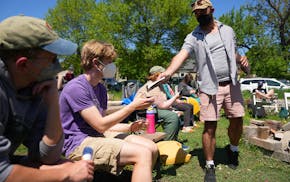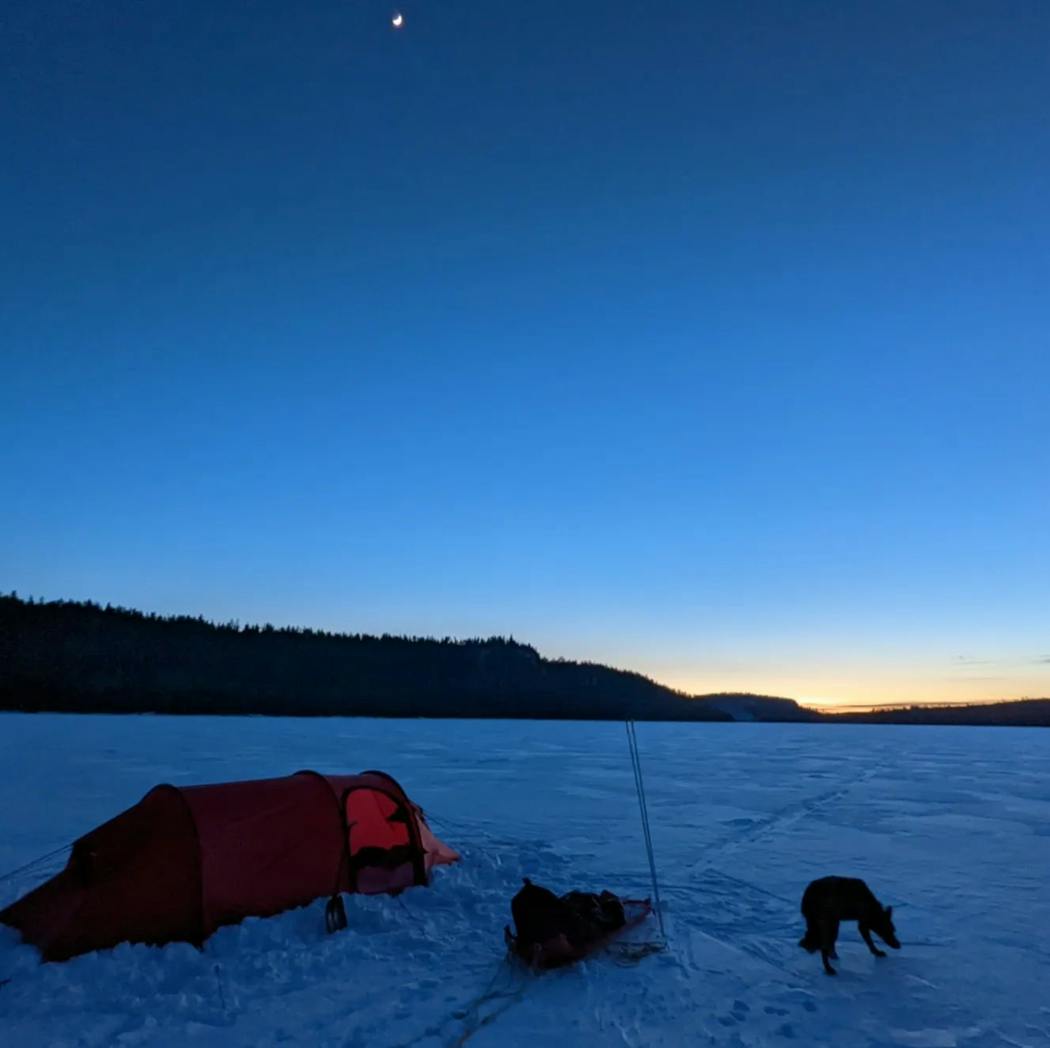DULUTH — Emily Ford didn't let herself panic.
Alone and standing chest-deep in icy water after plunging through the frozen surface of a waterway in the Boundary Waters Canoe Area Wilderness, Ford was miles away from anyone who could help. But she'd practiced cold water dunking, and her training kicked in immediately.
"My brain does a good job of slowing down and being really calm," she said, and clad in four soaking layers, she went into action. "Turn around. Get your elbows on the ice. Get snow on you to take off the water. Get to tent to change."
Ford kicked in the water and pulled herself out, then rolled in the snow. She changed her upper layers and made a "mad dash" through the woods to gather more firewood. She didn't feel the depths of the cold until she stopped moving. She felt more sheepish than scared, she said, "because I knew better. I knew it was thin ice, and I could hear it crackling."
Any panic, she said, was about her emergency phone in her pocket. Luckily, it still worked.
All the while, her sled dog, Diggins, who joined her on the planned 210-mile journey, was asleep in their tent near Iron Lake.
Deep snow — not the near-drowning — was the toughest part of their 28-day journey, Ford said. The trek ended abruptly this month when the pair stared down a wide-open Pigeon River less than 30 miles from her Lake Superior endpoint.
Their Voyageur's Highway route began Feb. 11 on the western edge of the national wilderness, where Ford skijored east across lakes, rivers and portages, she and Diggins pulling a sled through whipping winds, slushy terrain and temperatures well below zero.
"It was such a good trip, but it was one of the hardest things I've ever done," the 29-year-old Glensheen Mansion gardener said. Ford is not a newbie to winter adventuring. Last year, she became the second person to winter thru-hike the 1,200-mile Ice Age Trail — a woodland and prairie path that includes miles of road-walking across Wisconsin.
On the Boundary Waters trip this winter, Ford had Diggins leading initially, but the dog grew hesitant from too much slush, Ford said, so along the route she tethered the dog in the middle.
"If I skied in front of her, she would pull like mad," Ford said.
Deep snow was a constant obstacle. Sometimes the pair would get lucky and find a portage already opened by a mushing team, but often Ford would leave her sled behind and tamp down a pathway twice before being able to cross it with Diggins.
"I learned within my first week you have to manage your expectations," she said, rethinking how many miles they'd cross in a day and tackling something like a difficult portage with singular focus. "Those moments of resiliency helped me trust myself even more. You can do hard things. You put one ski in front of the other."
Nighttime was a respite, with up to 12 hours of rest after chores, ukulele playing and stargazing. Sleep came easy after long days, save for the occasional loud pop of ice cracking somewhere out on the lake.
Ford, who raised money for BWCA access for kids through her trip, isn't upset she didn't finish her route, ending at 181 miles. She didn't want to take risks with herself or Diggins.
"You are at the whims of nature," she said. "I hitched a ride out, and that was that."
Ford never saw the much-anticipated northern lights and the only sign of a wolf or a fox were the tell-tale tracks, she said, but she came away with a deeper appreciation for the sanctity of the million-acre parkland.
Part of her goal was to raise awareness about the threat of copper-nickel mining, she has said, which has controversially been proposed near the Boundary Waters.
"It's hard to get your mind around how all the water is connected until you use all the water to get from point A to point B," Ford said.
As for now, Ford, already the subject of a documentary, said she's toying with the idea of a book. And after two winters of wilderness travel, she plans to experience the season in Duluth next year instead of another adventure. But that could change.
"I would put an asterisk next to that," she said.

Want to share info with the Star Tribune? How to do it securely

'Safe recovery sites' would offer syringes, naloxone and more to people using drugs. The plan could be in peril.
New Minnesota GOP leaders seek peace with party's anti-establishment wing

Who is Republican Lisa Demuth, Minnesota's first House speaker of color?



